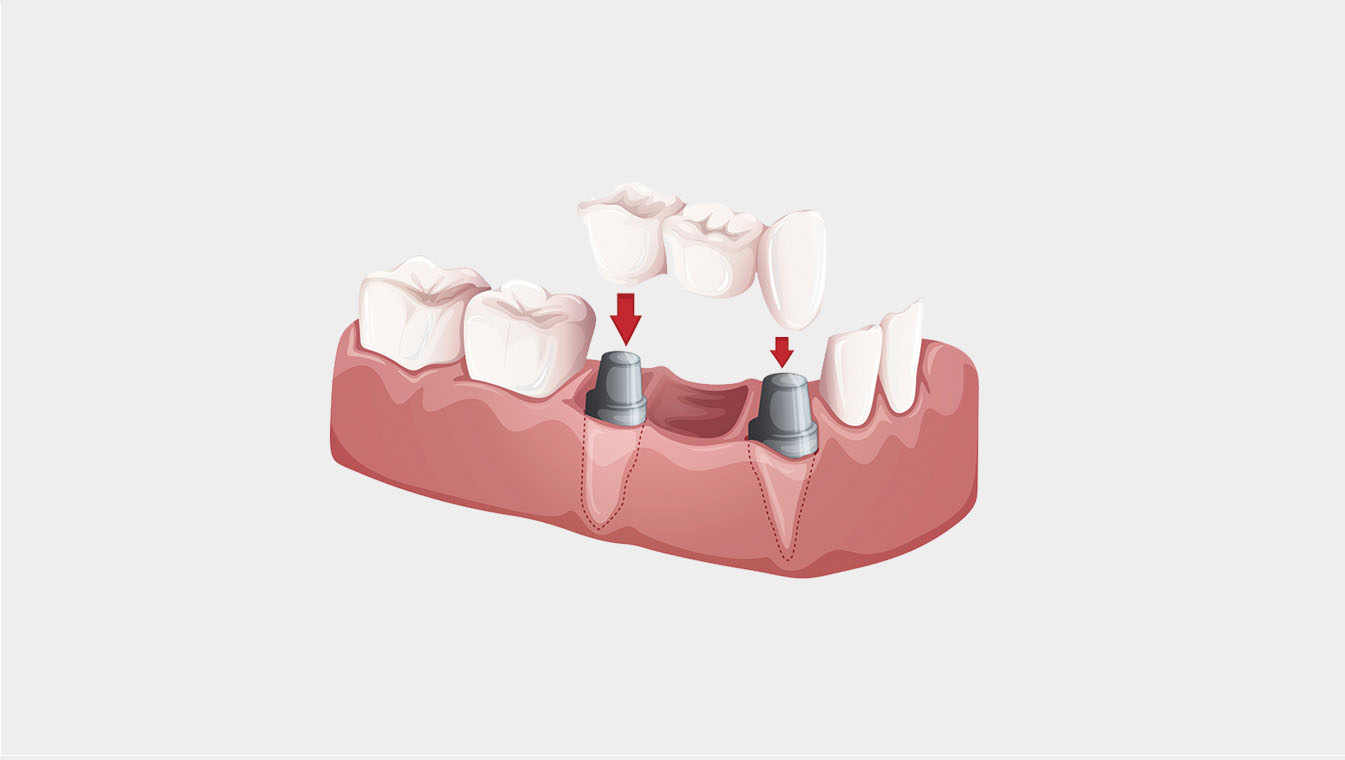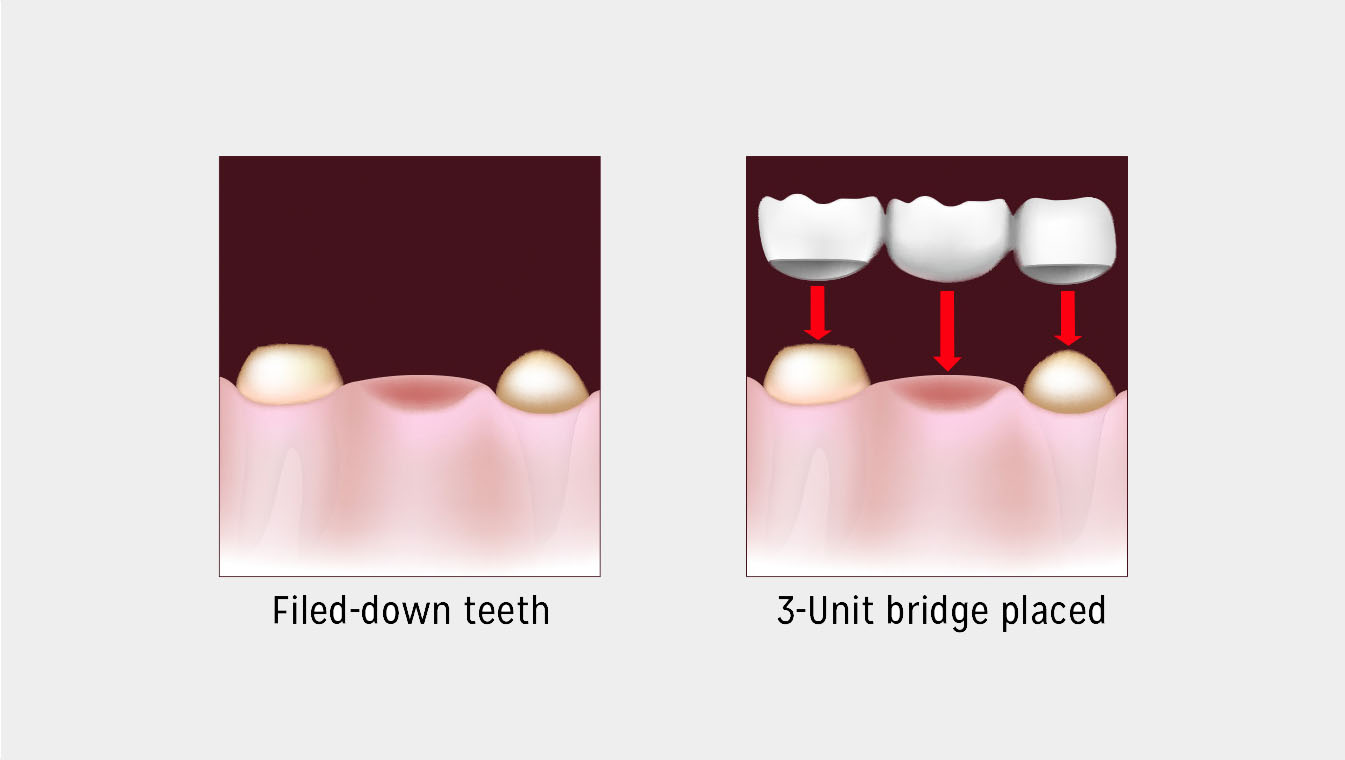the dental clinic
Dr. Rahul Shah
Dr. Deanna Lue
Dr. Janine Koutsaris
4869 Dundas St W
Suite 201, Toronto ON
M9A 1B2
(416) 233 9581
info@thedentalclinic.ca

A dental bridge is used to fill a gap or empty space that is left behind by one or more missing or extracted teeth. The dental bridge is always made up of two dental crowns, which are each located on opposite ends. The false or replacement tooth that will fill the gap or empty space is located between the two dental crowns. When filling a large gap or space, more than one replacement or false teeth will be located between the dental crowns. The crown portion and replacement tooth portion are all fused together as a single piece. The dental crowns are used as anchors and are referred to as abutment teeth. The replacement or false tooth is referred to as a pontic tooth or teeth.
Dental bridges may be made of metal alloys, gold, porcelain or a combination of any of these materials.
The crown portion of the dental bridge is usually supported by natural teeth that have been modified to fit the dental crown, but in some cases they may also be supported by dental implants if no healthy natural teeth are present.
Replacing a missing tooth with a dental bridge can:
While there are many benefits to a dental bridge, it is important to note that bone loss will occur in the area of the empty space or gap. Over time as this bone level continues to shrink, a gap will form between the gums and the pontic portion of the dental bridge. A dental implant is the only tooth replacement option that will not result in continued bone loss.
This following describes the process used when replacing a missing tooth using a three-unit dental bridge with support from natural teeth. When natural teeth cannot be used for support, dental implants are placed to anchor the crown portion of the dental bridge.

Dental bridges are a good tooth replacement option that last on average from between five to fifteen years with good oral hygiene and care. If you are looking to replace a missing tooth or missing teeth, contact us now. We would be happy to discuss all available tooth replacement options that are best suited for your smile and dental needs.